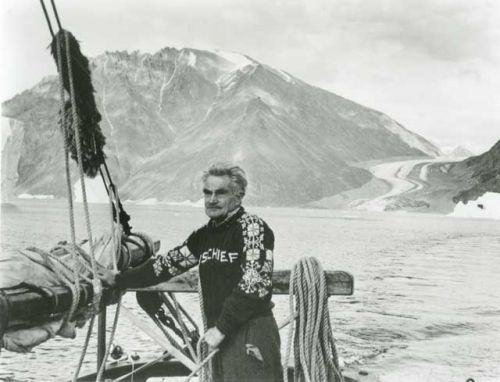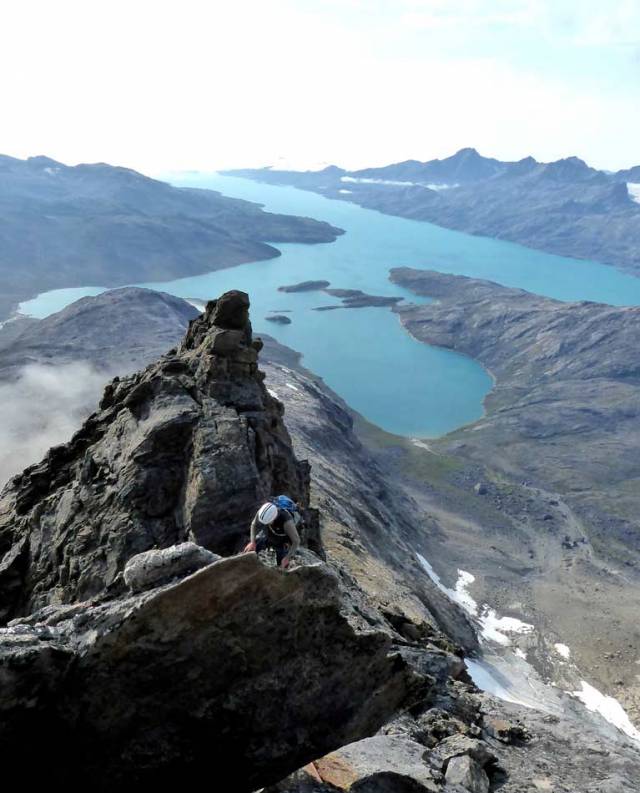This past summer’s successful Salmon’s Wake voyage by Limerick’s 56t traditional ketch Ilen to Greenland worked productively in many ways in high mountains, on the sea, and in ports where the crew interacted with Greenlanders on several cultural programmes.
But for Project Manager and skipper for the outward voyage Gary Mac Mahon, a particular aspect of Ilen’s fascinatingly varied sailing across oceans, along the coast of Greenland, and off the coast of Ireland, is that it has been done in a trading ketch of traditional Irish type, the only one currently sailing.
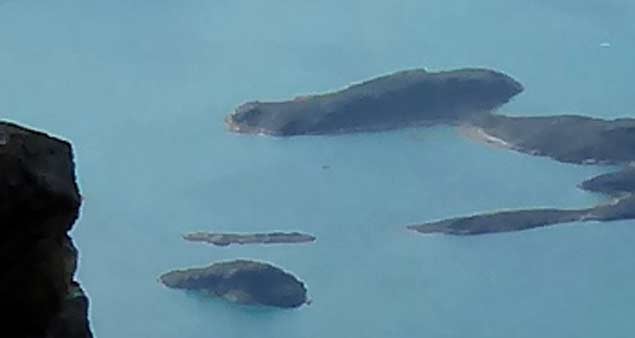 Seen from the heights of Tilman Peak, Ilen is the distant dot barely perceptible at the centre of this image. Photo: Paddy O’Brien
Seen from the heights of Tilman Peak, Ilen is the distant dot barely perceptible at the centre of this image. Photo: Paddy O’Brien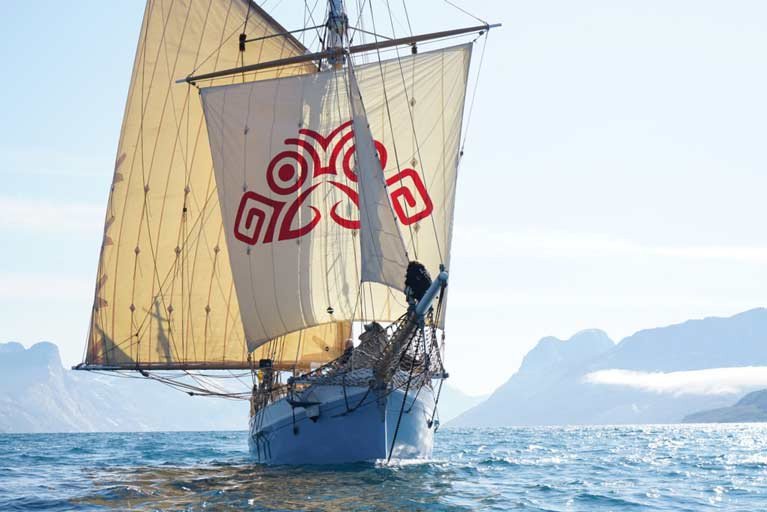 An “obsolete” yet still relevant type – the 1926 ketch Ilen in Greenland in 2019, setting her traditional square sail complete with distinctive Salmons Wake logo. Photo: Gary Mac Mahon
An “obsolete” yet still relevant type – the 1926 ketch Ilen in Greenland in 2019, setting her traditional square sail complete with distinctive Salmons Wake logo. Photo: Gary Mac Mahon
Here he reflects on this aspect of Ilen’s busy year, and makes links to previous sailors of “obsolete” craft:
SALMONS WAKE, 2019
“Let past times become pastimes”- James Joyce, Finnegans Wake, (1939)
“The venturesome pastime of sailing relatively small obsolete wooden traditional vessels towards remote parts in the pursuit of climbing, or just communing with lonely coastal mountains, is very much the business of a small group of individuals writes Gary Mac Mahon.
These individuals were favoured or perhaps inflicted with a singular character, and while often perceived misanthropically, were rather just the individual expression of an inscrutable humanity.
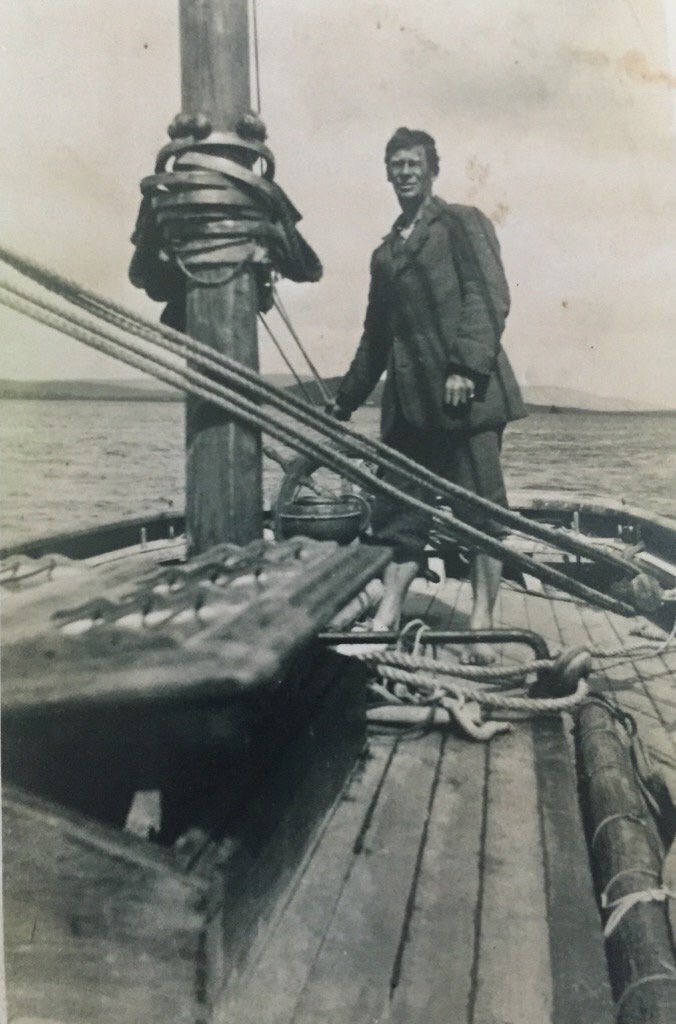
For this piece reflecting on the origins of the Ilen Project, I have plucked out two from a very small group, and they are mountaineer and round-the-world voyaging pioneer Conor O’Brien of Foynes (b.1880), and mountaineer/sailor Bill Tilman (who latterly lived in the mountains in North Wales, b.1898). Both were men of extraordinary fortitude and energy who shared a rich capacity for writing, ocean voyaging, mountaineering and the maintaining of big timbered sailing boats.
Both these men seemed at variance with the epoch they were inescapably thrust into, exemplified by their singular and similar life choices, but specifically for this specialized role: the nostalgic retrieval of boat forms of times past for deployment in the pursuit of adventurous pastimes. A not uncommon if atavistic response from individuals in the face of a world which would otherwise change too fast.”
